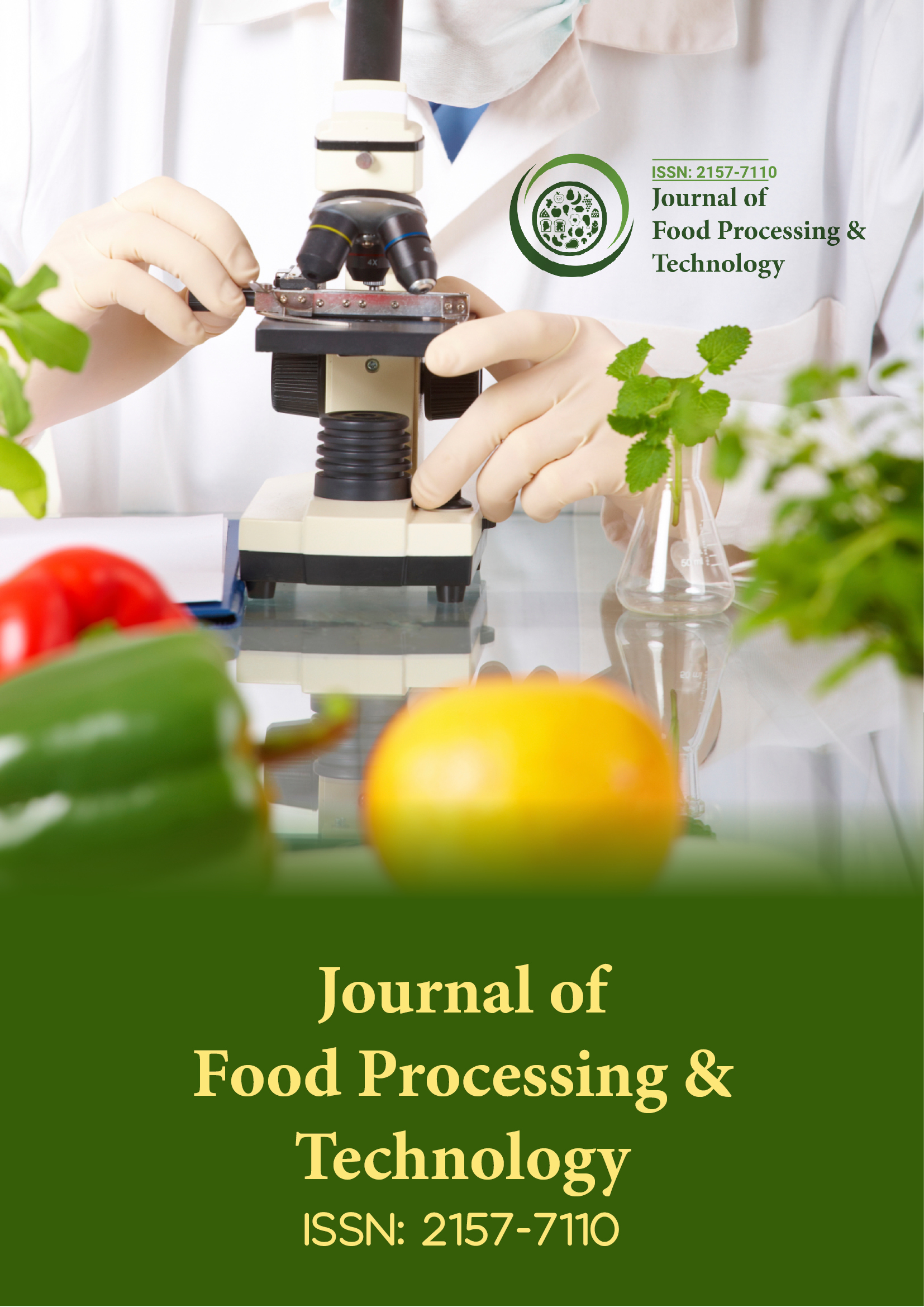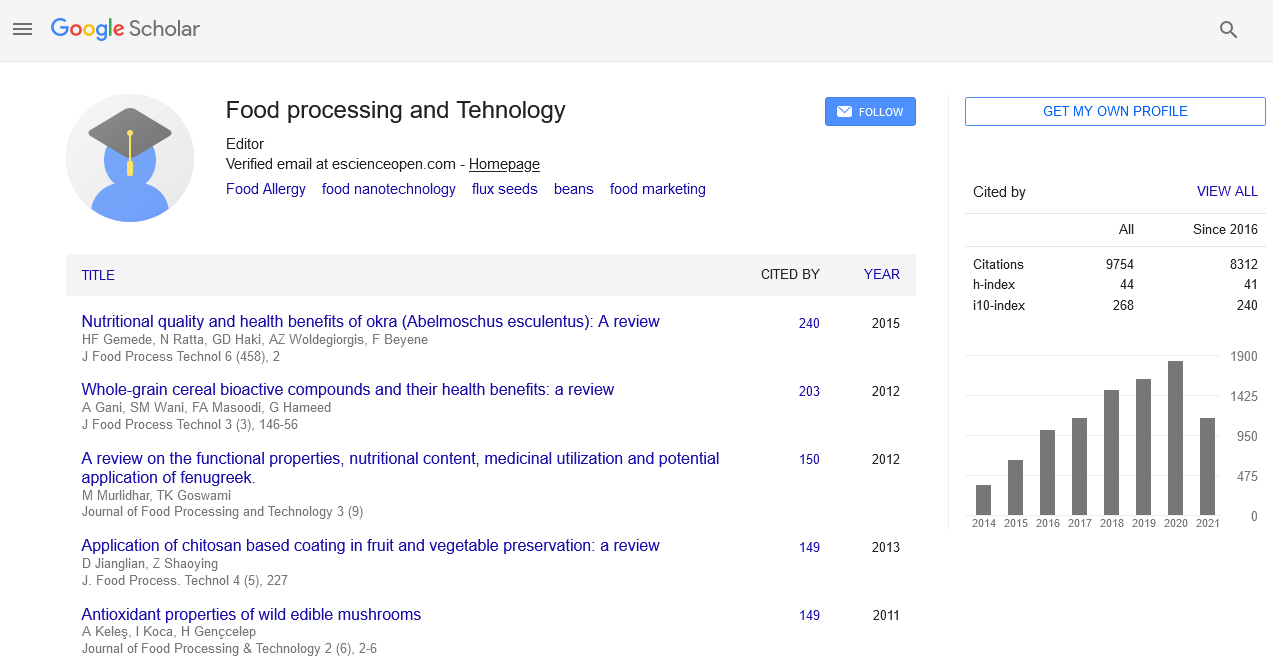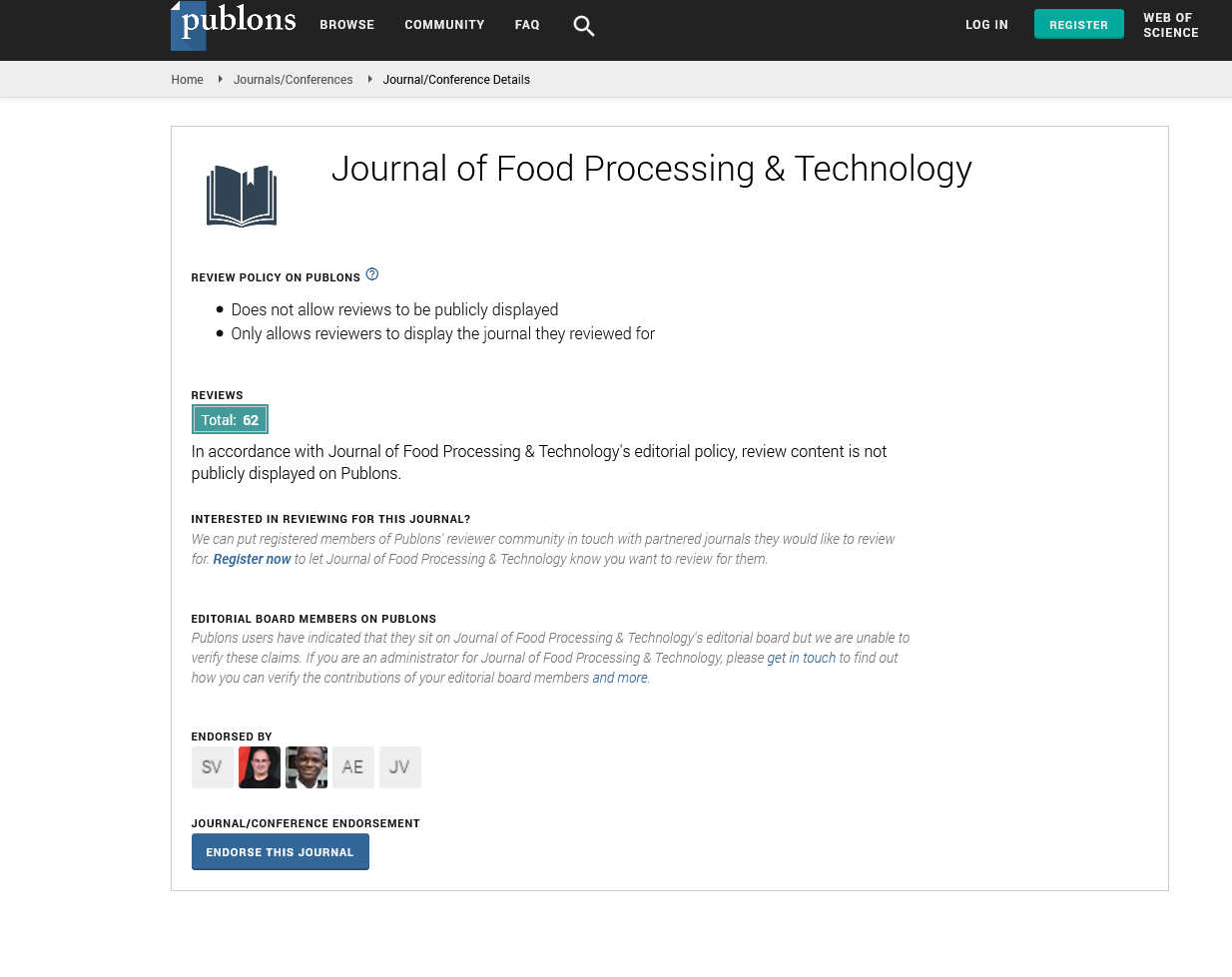Indexed In
- Genamics JournalSeek
- Academic Keys
- JournalTOCs
- China National Knowledge Infrastructure (CNKI)
- Access to Global Online Research in Agriculture (AGORA)
- Centre for Agriculture and Biosciences International (CABI)
- RefSeek
- Directory of Research Journal Indexing (DRJI)
- Hamdard University
- EBSCO A-Z
- OCLC- WorldCat
- Scholarsteer
- SWB online catalog
- Publons
- Euro Pub
- Google Scholar
Useful Links
Share This Page
Journal Flyer

Open Access Journals
- Agri and Aquaculture
- Biochemistry
- Bioinformatics & Systems Biology
- Business & Management
- Chemistry
- Clinical Sciences
- Engineering
- Food & Nutrition
- General Science
- Genetics & Molecular Biology
- Immunology & Microbiology
- Medical Sciences
- Neuroscience & Psychology
- Nursing & Health Care
- Pharmaceutical Sciences
Opinion Article - (2025) Volume 16, Issue 3
Innovations in Cold Plasma Treatment for Fresh Produce Preservation
Javier Morales*Received: 26-May-2025, Manuscript No. JFPT-25-29655; Editor assigned: 28-May-2025, Pre QC No. JFPT-25-29655; Reviewed: 11-Jun-2025, QC No. JFPT-25-29655; Revised: 19-Jun-2025, Manuscript No. JFPT-25-29655; Published: 25-Jun-2025, DOI: 10.35248/2157-7110.25.16.1161
Description
Fresh fruits and vegetables are highly perishable and tend to spoil quickly because of microbial contamination, natural enzyme reactions, and physical bruising. Traditional preservation methods like refrigeration, drying, and chemical treatments have helped extend their shelf life to some extent, but they also come with limitations. Refrigeration slows microbial growth but cannot completely stop it, and chemical preservatives may alter taste or raise safety concerns due to residue accumulation. This has encouraged researchers and the food industry to explore alternative preservation methods that are safer, more effective, and capable of maintaining the natural qualities of produce. One such approach that has gained growing attention is cold plasma treatment, a non-thermal technology that can enhance the safety and longevity of fresh produce without compromising its freshness or nutritional composition.
Cold plasma is essentially a partially ionized gas that contains charged particles such as ions and electrons along with reactive molecules. It is generated when gases like air, helium, or argon are exposed to controlled electrical discharges. Unlike conventional thermal methods, it functions at or near room temperature, which makes it ideal for treating fruits and vegetables that are sensitive to heat. When applied to produce, the reactive species formed during plasma generation interact with microbial cells present on the surface. These reactive particles damage the cell membranes and genetic material of bacteria and fungi, effectively inactivating them. Importantly, this occurs without causing visible damage or texture changes to the treated produce, allowing the fruits and vegetables to maintain their natural appearance and quality.
Numerous experiments have shown the potential of cold plasma in controlling microbial contamination on products like lettuce, strawberries, and tomatoes. It has been observed that after plasma exposure, the microbial load on the surface drops significantly, reducing the risk of spoilage and foodborne illnesses. Unlike chemical disinfectants, plasma treatment does not leave harmful residues or unwanted odors. The treated produce retains its characteristic aroma, color, and firmness, which are crucial factors for consumer acceptance. Vitamins, antioxidants, and other heat-sensitive nutrients also remain stable since the process does not involve elevated temperatures. This makes cold plasma an attractive method for maintaining the nutritional integrity of perishable foods while extending their usable life. Researchers and engineers are working toward making this technology practical for widespread use.
One area of focus is designing compact and portable plasma systems that can be easily installed in food processing units, packaging centers, or even supermarkets. Such devices would allow quick surface decontamination before packaging or distribution. When used in combination with refrigeration, cold plasma can act as an additional layer of safety, slowing microbial regrowth and extending freshness over longer storage periods. This can significantly reduce post-harvest losses and food waste, which are major issues in global food supply chains. An additional advantage of plasma treatment is its ability to degrade pesticide residues that might remain on fruits and vegetables after conventional washing. The reactive species in plasma can break down many organic chemical molecules, thereby lowering the levels of residues and making the produce safer for consumption.
This feature aligns well with consumer demand for cleaner, minimally processed foods. It also reduces reliance on intensive washing or chemical cleaning procedures that may waste water or generate secondary pollutants. Despite these encouraging outcomes, there are still technical hurdles to overcome. One of the major challenges lies in ensuring uniform plasma exposure across produce with complex shapes, such as leafy vegetables or unevenly surfaced fruits. Inconsistent treatment may leave some microbial colonies intact. Ongoing research aims to refine equipment designs, optimize treatment duration, and regulate gas flow patterns to ensure even and effective exposure. Scientists are also investigating how different gas types influence the performance of plasma treatment, as each gas composition generates distinct reactive species.
Regulatory and economic aspects play a significant role in determining the pace of adoption. The process must meet safety standards and gain approval from food safety authorities before it can be used commercially on a large scale. Public perception and awareness are equally important, as consumers often hesitate to accept unfamiliar technologies in food production. Clear communication about the safety, non-chemical nature, and nutritional benefits of cold plasma can help build trust. From an economic standpoint, while the initial setup for plasma systems may require a moderate investment, the long-term savings from reduced spoilage, decreased dependence on chemical preservatives, and longer distribution windows can make it cost-effective. Exporters can particularly benefit since plasma-treated produce can maintain freshness for extended periods, enabling shipments to distant markets without quality loss. This not only enhances profitability but also supports sustainability by minimizing food wastage.
Citation: Morales J (2025). Innovations in Cold Plasma Treatment for Fresh Produce Preservation. J Food Process Technol.16: 1161.
Copyright: © 2025 Morales J. This is an open access article distributed under the terms of the Creative Commons Attribution License, which permits unrestricted use, distribution and reproduction in any medium, provided the original author and source are credited.


